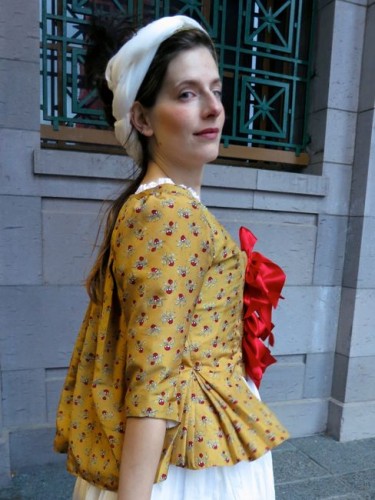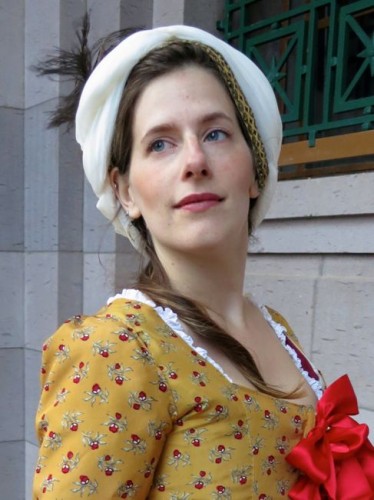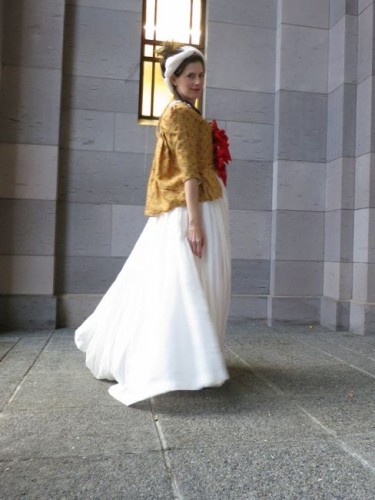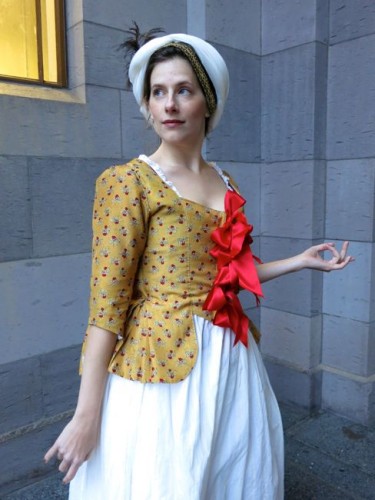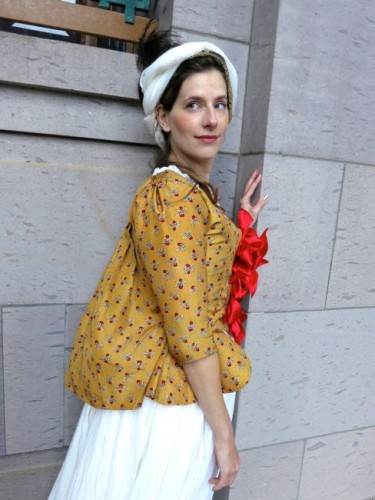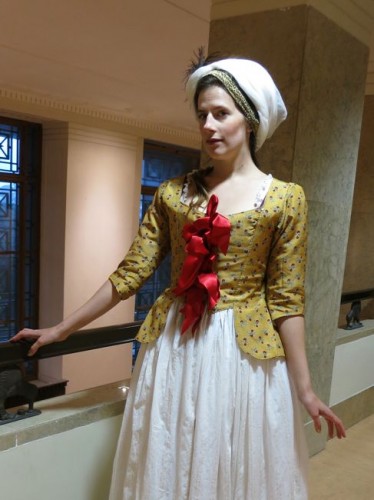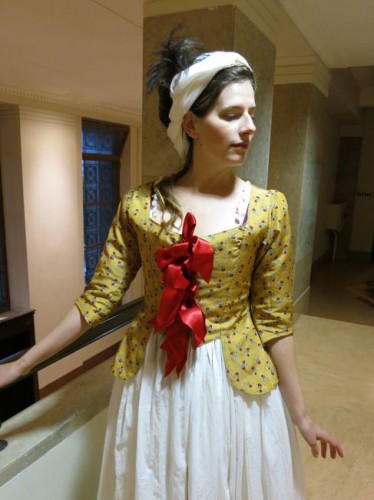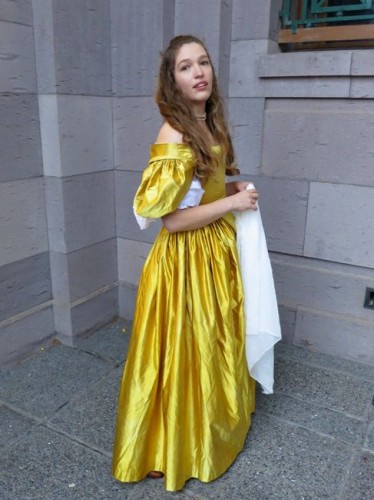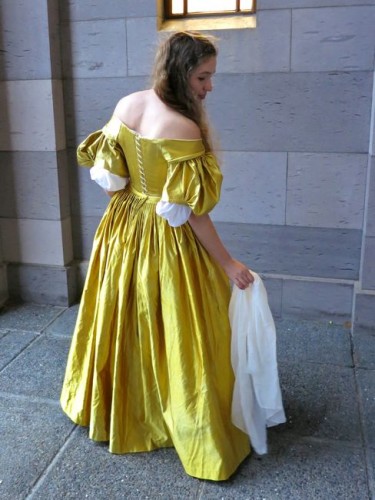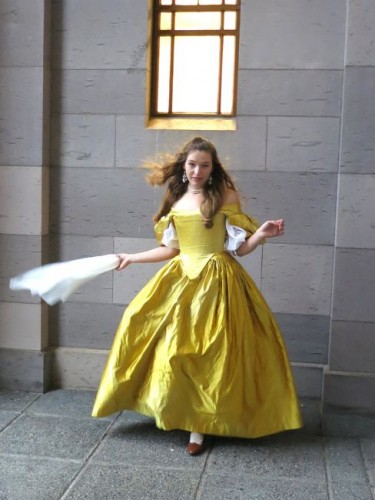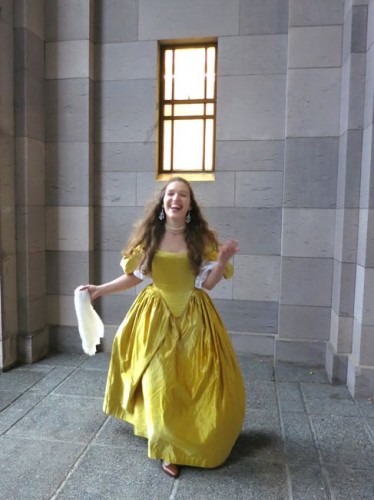It was interesting dressing Theresa in the pet-en-l’aire.
I always visualize pet-en-l’aires on rounded, full-busted figures, with dimpled arms and round faces: the sort of figures shown in French fashion plates of the era. Theresa is tall and slim. The pet fit her perfectly, but the change in proportions completely changed my perception of the pet-en-l’aire aesthetic. The pet suddenly looked elegant and exotic, rather than sweet and coquettish. Theresa in the pet looks like a Gainsborough rather than a fashion plate.
To play up the exotic aspect of the pet-en-l’aire, made as it is out of an Indienne chintz, and to worked with Theresa’s features, we focused on the orientalism so fashionable in the 18th century for the styling. Theresa’s hair is not hedgehog-friendly, so we did a turbaned headdress, and skipped the full ‘poof’ of petticoats and bumroll.
I wish I’d been able to find my proper ostrich feathers, not the skimpy ones I did find, and I still need to trim the pet and find proper silk (or at least rayon) ribbons for the front. But it looks pretty darn good, and Theresa, well, Theresa looks gorgeous!

